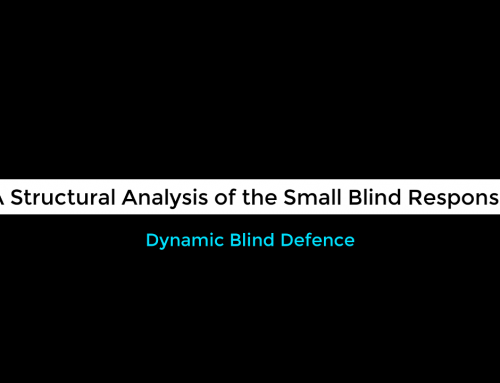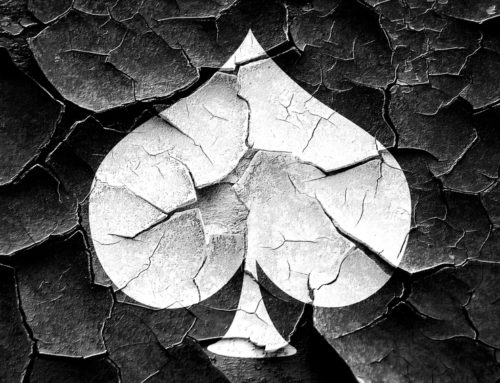In fact, don’t 3bet any hands with more than 1 card ranked between 2 and 5 in them (outside big pairs, double pairs and perhaps the wheel), and aim for 0 cards. Let’s examine why:
This hand will flop “nutty” (which I define as top two or better) 9% of the time. However, 2 of that 9 are flushes (not even approaching the nuts) leaving you with a strong playable hand at best 7% of the time. The draws are even more embarrassing; you flop a lowly OESD 17% of the time and although you flop a pair+FD 10% of the time, only 1.5% of the time is it top pair and its always a crappy FD.
Let’s compare the hands I suggested playing which are of a similar structure but also marginal. I have run a query on:
Ts8h[6s-Ks][6h-Kh]$np
This replaces the 2 and 5 you had with any cards from 6-K, keeping the double-suitedness and with the condition that there is no pair in your hand. Notice I left out the Ace deliberately so you cannot flop nut flush draws (which help any 3b hand considerably).
This group of hands flops “nutty” 16% of the time, 2 of this 16% will be flushes, but some of them will be K high. In addition, this family of hands flops OESD or better 22% of the time, of which around half are wraps of some description. 8% are 13+ out straight draws, which you can add to the “nutty” portion in most cases, especially since your double-suitedness means you will often have a BDFD or an FD yourself on the two-tone boards. Of your pair+FDs, now close to half are top pair and your FDs are better quality.
Finally in the analysis, if we look at the “rank” of each of these hands we see Th8s5h2s comes in at the 54th percentile and my group averaging the 10th percentile, worst case 16th. Whilst this is an examination of showdown-value, it has some relevance especially in position or OOP specifically against passive players. A good example would be if you 3b marginal Kings in position, Cbet a flop like 7h 2c Jh, get called by a guy with pair+marginal SD, turn flush (scare) card k/k and the river gets checked through for you to sometimes win. In contrast, when you play a crappy hand you force yourself to play more aggressively to avoid getting to SD with marginal draws or to end up at SD with the losing hand.
The class of hands [6-A][6-A][6-A][6-A]$np$ds makes up 1.7% of all hands. If you relax to a single-suited criterion you get 6.7% (8.4% total). Those hands are poorer but still do better than Th8s5h2s. You should be able to find enough hands that meet my suggested condition to still 3bet aggressively.
[2-5][6-A][6-A][6-A]$np$ds ranks out at 26 with a span of [4-77], so you need to be strict on the other 3 cards, say QJ95$ds will fare OK under the weaker (max. 1 card 2-5) condition.
I hope you found this analysis useful.
CLIFFS: Don’t 3bet any hands with cards ranked 2-5 in them (outside big pairs, double pairs, Axxx double-suited and perhaps the wheel).






Hi Phil.
Caveat first: I only play HUPLO, while I assume your article is aimed at 6-max; our perspectives are thus likely different.
3-betting a T852ds-type hand has a few important benefits:
(a) the hand defends well against an AA-heavy 4-bet range
(b) the hand gives you some board coverage on flops which are bad for a typical 3-bet range
(c) the hand has very little equity on the high flops which are supposed to hit a 3-bet range hard. Meaning that you will waste minimal equity when c-bet bluffing.
(d) It is tough to use the hand for anything else. I guess that HU I sometimes call / sometimes 3-bet this type of hand… but I guess that calling is not that EV+… and folding a double-suited hand with some weak connectivity intuitively seems bad.
Thoughts?
Here we go… lesson 1… 2..3…4..5… 🙂
I’m a little thick, I hope this is your first article. I randomly stumbled on your blog while trying to learn how to p*lay plo. Looks decent, so I thought I’d start systematically, with your first entry.
I felt as if you were pretty smart lol